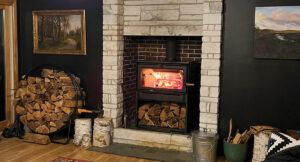 Now that you have had an energy professional come to your home to do an energy evaluation, one of the top three recommendations on your prioritized list of energy improvements is attic insulation. Now what? First of all use your energy professional to help guide you in your decision making process.
Now that you have had an energy professional come to your home to do an energy evaluation, one of the top three recommendations on your prioritized list of energy improvements is attic insulation. Now what? First of all use your energy professional to help guide you in your decision making process.
If you have read any of my past Energy Solutions articles, you know I would never recommend installing any type of fiberglass insulation products in the attic. Cellulose far outperforms fiberglass insulation in the loose fill (blown in) category. Also remember, you always air seal before you insulate. Here are some questions you could ask an insulator during the interview process.
Existing home attic insulation:
Q: “Before you install my attic insulation you will need to do air sealing in certain areas. Do you use a blower door and infrared camera when you do air sealing?”
A: The correct answer should be “yes.” If they are not using at least a blower door to locate air leaks, quantify the air sealing reduction and to check their work, how good of a job did they do? Who knows? Unfortunately, it’s not common for insulation companies to use a blower door before, during or after the work has been completed. There are some that do.
Q: “What kind of insulation do you install in attics? Who makes it?”
A: The correct answer is “cellulose insulation.” Also, they should know the manufacturer of the product they are installing. For some companies, it’s what they got the best buy on last week.
Q: “What is the boron content of your cellulose insulation?”
A: Good cellulose insulation manufacturers will use 12 – 15 percent boron by weight as a stabilizer. Ammonium sulfate is a stabilizer used in cheaper cellulose insulations like what you get from the big box stores, but smells like cat urine if it gets wet. Two good cellulose manufacturers are Nu-Wool and Champion.
Q: “How many bags of insulation will it take to insulate my attic?”
A: Insulation is NOT installed by inches of thickness in your attic. By law, every bag of insulation must have an insulation coverage chart printed on it. It’s installed by what R-value you need to add. Look at the coverage chart for the R-value you desire. One of the columns on the chart will have the square foot coverage per bag at that R-value. For example, if you have a 2,000 sq/ft attic and you need an additional R30 in your attic, one bag of insulation will cover 21.9 sq/ft per bag at an R30. If you have a 2,000 sq/ft attic they should install 92 bags of insulation (2,000 ÷ 21.9 = approx. 92 bags).
Note: Some insulators are trying to pedal a hybrid insulation system where they apply about 2″ of spray foam over the entire attic floor and finish with the blown in fiberglass insulation. They are telling clients you will be assured to meet the new energy code’s air leakage rate. Don’t fall for that. It is more expensive and sounds tempting, but this system costs a lot more and will not perform as well as if the attic floor penetrations were sealed and cellulose insulation was installed!
Wall insulation: If you are going to use fiberglass insulation in the exterior walls of your new home, there are some basic rules you have to follow – all of the wall cavities must have six sides, each cavity must be reasonably air tight with all joints between the framing to sheathing sealed before installing the insulation, install a high density batt that fills the cavity to prevent any convective air flowing through the batts, and no voids or compression in the batts. If you can check all those boxes the batts will perform just fine. Good luck.

Q: “How are you going to seal the wall cavities before you install the fiberglass batts?”
A: Most insulators will sell you a “Flash and Batt” insulation system where they apply ¾” to 1″ of foam to the inside of the exterior sheathing and then install an R11 fiberglass batt. In my opinion, before I would spend money on this Flash and Batt insulation system, I would have the spray applied insulation installed in my walls and forget about it. The spray applied cellulose will air seal and insulate the walls with no insulation voids and you will save money up front and each month.








